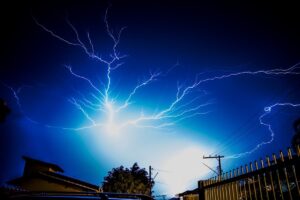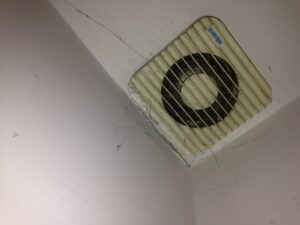While we take modern technology for granted most of the time, an occasional lesson on how electricity arrives at our disposal reminds us just how good we really have it. Electricity quite literally makes our technological age possible, but many users know precious little about how we are able to heat, light, run, and cool our homes and businesses.
You’ve got questions? We’ve got your answers. The next time a child pulls on your sleeve and asks how the lights turn on, you’ll be able to answer. In detail.
Generated for You
Electricity is generated at a power plant and, from there, enters a transmission substation, located on power plant grounds. Long-distance transmission, which allows energy to reach homes in your community, occurs using a very high voltage on a transmission grid.
In order for energy to reach your home, it must pass through transmission lines, supported by large steel towers. Electricity can be transmitted approximately 300 miles with the help of these lines.
However, the lines do not directly deposit electricity into your home. Rather, energy moves down to a distribution grid and is carried along lower-voltage lines. These distribution wires bring electricity to your house through another transformer that reduces the voltage further.
The final stop on this electrical highway to your fuse box is a meter, usually affixed to the outside of your home, which reads your usage for the electrical company. Each time you turn on a light, electricity is pulled from the source to destination, logging this activity in your meter. Once electricity has passed this last weigh-station, it’s in your home and ready for use.
What Happens from There?
Once electricity is available to your electrical panel, it distributes the current through circuit breakers or fuses to the electrical devices that supply power to electrical loads, including lighting and appliances. Distribution occurs using switches, receptacles, and lighting fixtures.
What About Electrical Problems?
Faulty wiring can cause a wide range of electrical issues, including buzzing outlets, flickering lights, and even loss of power. If your home was built prior to 1980 and has never been rewired, it may still run on aluminum wiring. Aluminum wiring is associated with devastating electrical fires in older homes, so call Prairie Electric immediately to replace those old wires with copper.
Electricity makes modern life possible. We use it to light our homes and businesses, run our traffic signals, power our phones and electronic devices, and cook our food. Understanding the origins of this incredible power source allows us to both appreciate what we have and troubleshoot when issues arise.
For electrical issues of all kinds, call Prairie for timely, expert service – always with a smile.


